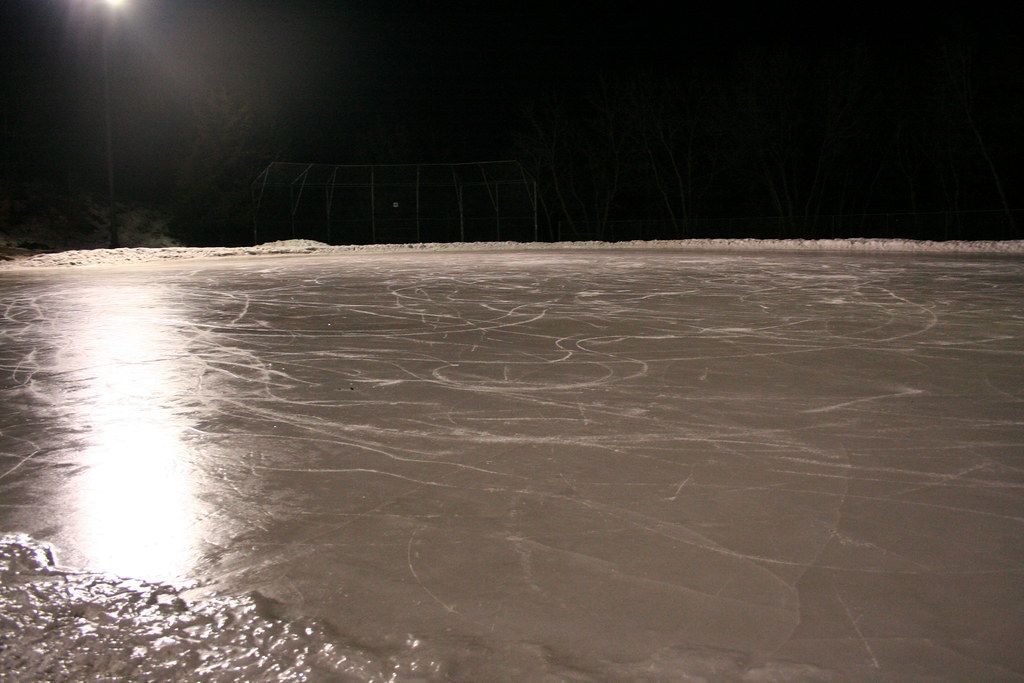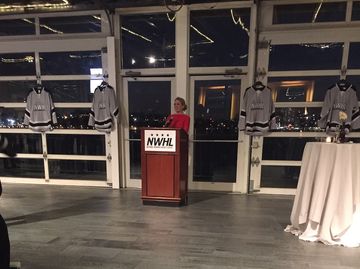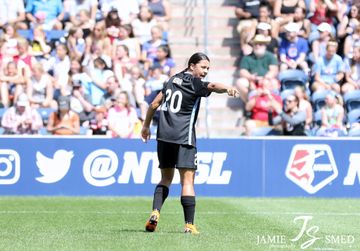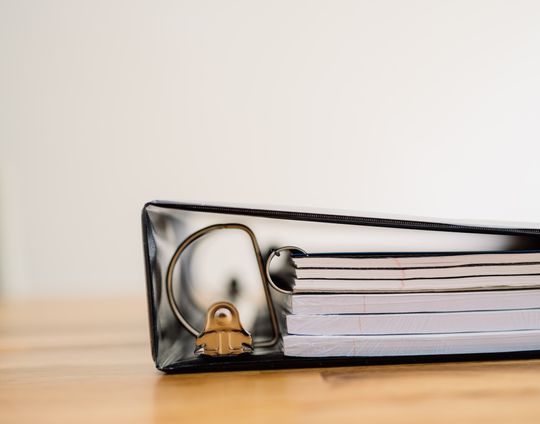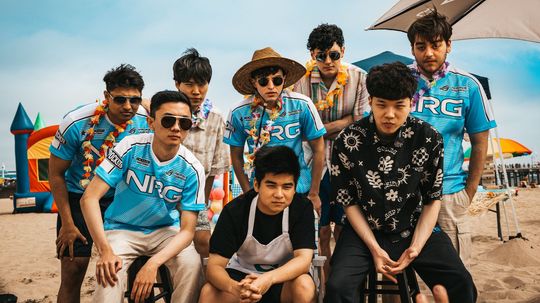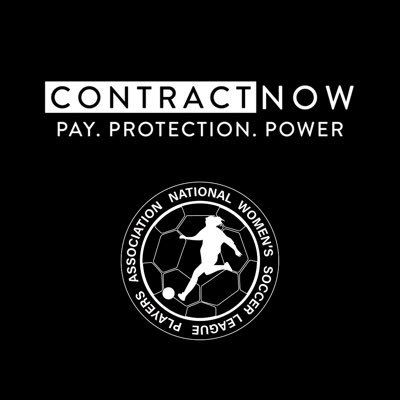Being a worker is, well, work, and in order to secure the rights of workers, formal unions and collective action have been used throughout history. What constitutes a labor organization or union is largely dependent on IRS regulations in the United States, but you can still form a nonprofit to collectively work towards changing labor conditions for certain groups of people.
Here is a rundown of how unions and labor organizations work in the US (in the simplest possible terms) and what the current labor organizations are like in women's hockey and other sports organizations.
What is the PWHPA?
The Professional Women's Hockey Players Association was incorporated in the state of Pennsylvania on May 17, 2019 as a 501(c)(6) nonprofit. The corporation technically has no members. The PWHPA is not a union, but an advocacy organization for professional women's hockey players.
Why isn't the PWHPA a union?
Because to be a formal labor organization in the United States, the majority of an organization's members must be employed (rather than freelance or self-employed). Unions can have freelance members, but most members must be employees for it to qualify for the 501(c)(5) status under IRS guidelines. For more information on what constitutes a labor organization in the United States, you can read the IRS guidelines on 501(c)(5) status.
Essentially, the PWHPA is not a union because they do not have an organization with which they can pursue collective bargaining. They are not employed by anyone. They are, currently, an independent advocacy organization, with the express purpose of creating a framework for professional women's hockey going forward:
The corporation is a Pennsylvania not-for-profit trade organization, organized in accordance with Section 501(c)(6) of the Internal Revenue Code, dedicated to promoting, advancing, and supporting a single, viable professional women's ice hockey league in North America that showcases the greatest product of women's professional ice hockey in the world.
So, was the CWHLPA a union? What about the NWHLPA?
The CWHLPA was not a union and was just an informal organization of players. The NWHLPA is not a union. This is because it is not incorporated separately from the NWHL and is in fact part of the NWHL itself. A formal labor organization must be incorporated separately from the company or companies where the majority of members are employed.
In simple terms, this is to allow for true collective bargaining where the workers can independently advocate for their own interests.
What about the USWNT?
In January of this year, the United States women's national ice hockey team members created an organization called the United States Women's National Ice Hockey Team Players Association, or USWNITPA. The USWNT organization is also not a union; it is incorporated in Pennsylvania in a virtually identical fashion to the PWHPA as a 501(c)(6) organization.
The corporation is a Pennsylvania not-for-profit trade organization, dedicated to providing United States women hockey players paid by USA Hockey, Inc. ("USA Hockey") with an organization dedicated to the promotion and advancement of women's involvement in the sport of ice hockey, both domestically and internationally; the improvement of econonomic and other working conditions of the players; and the betterment and maintenance of relations between the players and USA Hockey.
The difference is that the USWNITPA has members, presumably the players.
Are there other unions in women's sports in the United States?
The NWSLPA was recently recognized as a union by the NWSL this past November after previously being an advocacy organization. The national team players for Team USA on NWSL rosters were always backed by their own union, but this is the first time that non-national team players in the NWSL have been backed by a union.
Being formally unionized is not, unfortunately, an antidote to bullshit, as the United States women's national soccer team found out when they sued U.S. Soccer this March, and received a response in court earlier this month. The USWNT alleged that they were being compensated and treated in a materially different way from the men's team despite the fact that they were performing similar labor. U.S. Soccer's response is eight-dimensional chess for the ages, alleging that it is okay to compensate the two teams differently... because they choose to compensate the two teams differently?
The USWNT and USMNT play at different times, in different locations, against different opponents, and are comprised of athletes who have different obligations, are compensated in fundamentally different ways, and enjoy different benefits; thus, USWNT players have no male 'counterparts' who play for the USMNT.
The Women's National Basketball Players Association, which represents WNBA players, was the first union comprised of women athletes in the United States, created in 1998. The WNBPA engages in collective bargaining with the WNBA. It was the first women's professional sports league with a union in the United States, and recently announced that they will not be renewing their agreement with the WNBA. Their current CBA was enacted in 2014 and could have lasted until 2021 had the Players Association not opted out.
How do unions work in men's sports, and elsewhere? What happens when a union is formed?
All the major pro men's sports you're familiar with in the United States have formal unions, incorporated separately from their respective leagues, which engage in collective bargaining to negotiate benefits, compensation, and standards of working conditions for their members.
You may be familiar with unions and collective actions in other industries, such as journalism or ridesharing, that have gotten a lot of media attention in recent months and years. When a union is formed by employees, they then ask their employer to recognize them and acknowledge their legitimacy to then engage in collective bargaining. Sometimes, a company will hold out on recognizing a union in the hopes of creating enough tension that the union backs down from its activities. They do this so that the company does not have to engage in labor negotiations that would cut into their profits or force them to treat their workers better. They may also try to find other workers who will work for them without participating in union activities. These workers are often referred to as scabs.
(Recent changes to how we define work have arguably expanded the definition of what constitutes strikebreaking or scabbing. The gig economy and decentralization of individual labor means that you may never technically be eligible to join a union that can engage in collective bargaining for your rights. This means that collective action may not be technically considered striking, and working in spite of an ongoing labor action may not technically be considered scabbing under the traditional definition, since there is no formal strike to break. Calling someone a scab is a very incendiary thing to do, so it is important to understand the ramifications of it. In the modern sense, we may consider scabbing to be any activity that directly counters or undermines the efforts of an ongoing collective labor action. If you are concerned about calling someone a scab, you may choose instead to refer to their actions as anti-labor.)
Men's sports has the advantage in the labor arena since their bodies are established revenue sources for the leagues they play in. Unions in Major League Baseball and the National Hockey League were formed in the late 1960's, whereas the National Basketball Players Association and the National Football League Players Association were formed in the 1950's. The NBPA was not acknowledged by the NBA until ten years after it was established. In all of these cases, the leagues involved had decades to build their businesses on the backs of their players' labor, so when the players organized, they had significant leverage.
What is the significance of the PWHPA as collective action?
Unfortunately, capitalism dictates that your value is determined by the money you make for your bosses. Much like the circular argument by U.S. Soccer that they don't have to compensate women players the same because they are on a different team, women's hockey players have been prevented from establishing their value in the marketplace because no one with money to spend on them will acknowledge that they have value. The current state of capitalism presents significant barriers to the possibility of true unionization in women's sports; the WNBA was the first to do it, and they did so within a year of beginning play, in 1998. Arguably WNBA players' working conditions are the best in pro women's sports; they certainly have the highest minimum salary, which is above $40,000 – compared to the NWSL which for 2019 has a league minimum of $16,538, and just unionized this past winter. The NWHL's minimum is now $4,000.
The material gains of unionization and collective action are real. But to engage in this type of collective action, or to engage with it, all parties must believe that women athletes are workers who deserve material support. Without that, all discussions about women's hockey as a labor movement are nonstarters.
In hockey, the material gains made by the NHLPA on behalf of the players are obvious; however, the NHL has been the most obstinate of the major sports leagues, repeatedly willing over the years to lock its players out and suspend the season rather than negotiate terms that are favorable to the workers. But the players have some soul-searching to do about how they advocate for those within their own organization. The NHLPA has, most recently, used relatively tempered language when discussing the matter of head trauma and CTE, saying that they will work with their Concussion Subcommittee towards improving concussion protocol and "safe return to play", but without acknowledging the fact that this is a life and death situation for many players and that the NHL's rules and discipline are partially to blame. The CTE issue is one that Gary Bettman will not acknowledge the existence of, even under oath, proving exactly how craven bosses and even formally unionized employees can be when millions are to be made at the expense of player safety.
In short: unions are rarely perfect and have the potential to operate in a way that upholds capitalism and insulates millionaires. Every labor organization or collective action should be obligated to examine how it is materially helping all of its members and participants, including those who are most disadvantaged. And if a worker does not feel that they are being represented fairly, they can take action of their own. This may lead to new unions or new organizations. Which is how you end up with the PWHPA, and the current divide in women's hockey. Clearly, some players feel like the new NWHLPA gains have met their current needs. Those who have joined the PWHPA disagree.
None of this is a value judgment, except for the matter that collective action is a net positive for workers, and that undermining collective action serves to materially dispossess those who are participating in that action. The nature of the PWHPA is to be an organization that creates something of its own, rather than participate in what already exists. It's organizing to change the culture and norms within which women's hockey operates. The goal of the NWHLPA – to secure better labor conditions only within the NWHL itself – is just completely removed from what the PWHPA is trying to do. The two things are opposed to each other in a philosophical sense, but not even on the same planet materially.
The current "ideal condition" (for example, something similar to the WNBPA) isn't even all that radical. The current dichotomy of the WNBA and NBA upholds capitalism and patriarchal power structures, accepting as fact that men's players in their affiliated league will make tens of millions of dollars annually. A future women's hockey league probably won't demand that the NHL cut its own millionaire player salaries to contribute to equity. (Though, it would be super badass if they did.) Nevertheless, you cannot organize to change the material conditions within a system that does not yet exist. First, you have to create the system.
How does the Victory Press intend to engage with these issues in its coverage?
We have agreed as a staff that we will continue to cover women's hockey going forward with a focus and priority on labor. This means that further NWHL coverage will be focused on players, business matters, and labor conditions.
If you have any questions about labor rights we would love to answer them! Please contact us, join our Discord, or mention us on Twitter.
(Photo: Creative Commons)
